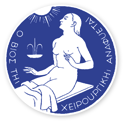Haemorrhoids refers to a condition in which the veins around the anus or in the rectum become swollen and inflamed. Majority of people may suffer from haemorrhoids at some point in their life time. It is more common in individuals aged between 45 and 65 years and in pregnant women. External haemorrhoids occur on the skin around the anus whereas internal haemorrhoids develop in the rectum. Internal haemorrhoids tend to protrude out through the anus.
Several factors are considered to as the causes for haemorrhoids and some of them include
- Chronic constipation and diarrhoea
- Excessive straining during bowel movement
- Diet which lacks fibrous food
- Aging (weak connective tissue in the rectum and anus)
- Pregnancy (increased pressure in the abdomen)
Symptoms
Internal haemorrhoids: The most common symptom is passage of bright red blood with the stools. If the haemorrhoids have prolapsed, it causes pain, discomfort and itching around the anus.
External haemorrhoids: Blood clots may form in the swollen veins causing bleeding, painful swelling or a hard lump.
Diagnosis
Your doctor will perform a physical examination which involves digital rectal exam with a gloved, lubricated finger and an anoscope. Additional diagnostic tests may be ordered to rule out other causes of bleeding.
- Colonoscopy: Colonoscopy is a procedure used to view large intestine (colon and rectum) using an instrument called colonoscope.
- Sigmoidoscopy: This procedure uses a shorter tube called a sigmoidoscope to transmit images of the rectum and the sigmoid colon (the lower portion of the colon).
- Barium enema X-ray: This procedure involves taking an X-ray after injecting a contrast material called barium into the colon.
Treatment
Lifestyle modifications and dietary changes often are helpful in reducing the symptoms of haemorrhoids. A diet having high fibre content soften the stools and helps to pass them easily thereby avoids straining. Fruits, vegetables and cereals serve as a good source of dietary fibres. Fibre supplements such as methylcellulose or stool softeners can be taken. Drinking plenty of water and adequate exercise helps prevent constipation. Over-the-counter creams and suppositories help relieve the pain and itching. However, these are short time remedies as long-term use can cause damage to the skin.
Treatments are provided for internal haemorrhoids and include the following:
- Sclerotherapy: This involves injecting a chemical directly into the haemorrhoid tissue. The solution numbs the site and hardens the haemorrhoid tissue leading to scar formation. After four to six weeks, the haemorrhoid shrinks and falls off. The disadvantage of this method is the recurrence of haemorrhoids after about a year.
- Surgical removal (haemorrhoidectomy): Haemorrhoids are masses or lumps formed due to swollen blood vessels inside or outside the rectum. In severe stages, they may become infected or protrude from the anus (prolapsed haemorrhoid) and require surgical removal.









